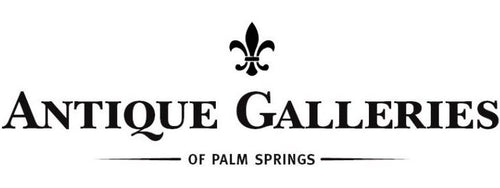Diecast Cars: A Collector's Favorite

If it's true that big boys love big toys, they also love small ones. For most of the 20th century, diecast cars have been one of the most popular collecting categories among males of all ages. Historically, men have tended to collect objects not made specifically for collecting; e.g., coins and stamps, books, tools, and militaria being good examples. Nonetheless, diecast cars and trucks have now been man-cave favorites for more than 100 years. Here's some history.
First of all, and despite the explosion of diecast collecting in the 1950s following WWII, the art of diecasting goes back much further. Much like Vienna bronzes, diecast vehicles are formed when a hot zinc alloy (or sometimes lead) is poured into a mold and allowed to cool. The finished product is remarkably detailed for its size and appeals to both car buffs and toy collectors alike. Such a method of production also allows for reasonable pricing and a wide variety of models.
Of all the early makers, none was more pioneering than Dinky Toys. A British firm founded in 1908, Dinky began by making model trains but saw the auto boom coming and by the mid 1930s had moved to diecast cars. Initially sold in mixed sets of six, Dinky cars proved to be the perfect toys for Depression-era kids and the line was quickly expanded.
Dinkies were made of lead, an advantage in heft and durability over the tinplate toys then mostly in circulation, and tinplate makers did not fail to notice. Before long, Corgi Toys was a formidable competitor, capitalizing on its ability to install plastic windows in every car. If it doesn't seem like much now, it was a big deal in 1956 and gave Corgi a significant leg up in the market.
Up until this time, most diecast cars were generic with relatively few distinguishing details. Corgi, also a British company, chose to focus on classic English cars of the era. Their Morris Cowley, Austin Healey, and Triumph cars are highly sought after today.
Both Dinky and Corgi built to "O" scale, a proportional designation that harkened back to their model train roots. At the time, "O" scale was the smallest of model trains (today's "Z" scale being even smaller) and diecast cars were built to similar scales ranging fro 1:43 to 1:48. Small as they were, diecast cars were about to get even smaller.
As technologies improved and new entrants were attracted to this growing market, another formidable competitor emerged. Once again it was a British firm that moved to the forefront. During this period of growth, Lesner Products introduced Matchbox cars in 1:65 scale, each individually packaged in a faux match box. Less expensive than either Dinky or Corgi, they were instant hits and a 10-year period of intense competition ensued.
Finally, a category-buster in the form of Mattel Toys broke the logjam. Their Hot Wheels line, an array of highly imaginary cars with bright colors and fantastical features was released in the USA in 1968 and worldwide within a decade. Hot Wheels were American made and European makers simply couldn't compete. Over the years, Mattel absorbed all the early makers. Some have since been reproduced while others have languished. One by one they fell away, leaving Hot Wheels as the 800-lb gorilla in the space.
Today Corgi and Dinky cars can still be found in auctions and antique stores with most models available for a few hundred dollars. Given their discount origins, Matchbox cars usually sell for less. Condition is key, with new-in-box examples or those of particular rarity selling at premiums. As long as America's love affair with cars continues, thecappeal of these diecast miniatures is not likely to diminish.
First of all, and despite the explosion of diecast collecting in the 1950s following WWII, the art of diecasting goes back much further. Much like Vienna bronzes, diecast vehicles are formed when a hot zinc alloy (or sometimes lead) is poured into a mold and allowed to cool. The finished product is remarkably detailed for its size and appeals to both car buffs and toy collectors alike. Such a method of production also allows for reasonable pricing and a wide variety of models.
Of all the early makers, none was more pioneering than Dinky Toys. A British firm founded in 1908, Dinky began by making model trains but saw the auto boom coming and by the mid 1930s had moved to diecast cars. Initially sold in mixed sets of six, Dinky cars proved to be the perfect toys for Depression-era kids and the line was quickly expanded.
Dinkies were made of lead, an advantage in heft and durability over the tinplate toys then mostly in circulation, and tinplate makers did not fail to notice. Before long, Corgi Toys was a formidable competitor, capitalizing on its ability to install plastic windows in every car. If it doesn't seem like much now, it was a big deal in 1956 and gave Corgi a significant leg up in the market.
Up until this time, most diecast cars were generic with relatively few distinguishing details. Corgi, also a British company, chose to focus on classic English cars of the era. Their Morris Cowley, Austin Healey, and Triumph cars are highly sought after today.
Both Dinky and Corgi built to "O" scale, a proportional designation that harkened back to their model train roots. At the time, "O" scale was the smallest of model trains (today's "Z" scale being even smaller) and diecast cars were built to similar scales ranging fro 1:43 to 1:48. Small as they were, diecast cars were about to get even smaller.
As technologies improved and new entrants were attracted to this growing market, another formidable competitor emerged. Once again it was a British firm that moved to the forefront. During this period of growth, Lesner Products introduced Matchbox cars in 1:65 scale, each individually packaged in a faux match box. Less expensive than either Dinky or Corgi, they were instant hits and a 10-year period of intense competition ensued.
Finally, a category-buster in the form of Mattel Toys broke the logjam. Their Hot Wheels line, an array of highly imaginary cars with bright colors and fantastical features was released in the USA in 1968 and worldwide within a decade. Hot Wheels were American made and European makers simply couldn't compete. Over the years, Mattel absorbed all the early makers. Some have since been reproduced while others have languished. One by one they fell away, leaving Hot Wheels as the 800-lb gorilla in the space.
Today Corgi and Dinky cars can still be found in auctions and antique stores with most models available for a few hundred dollars. Given their discount origins, Matchbox cars usually sell for less. Condition is key, with new-in-box examples or those of particular rarity selling at premiums. As long as America's love affair with cars continues, thecappeal of these diecast miniatures is not likely to diminish.






